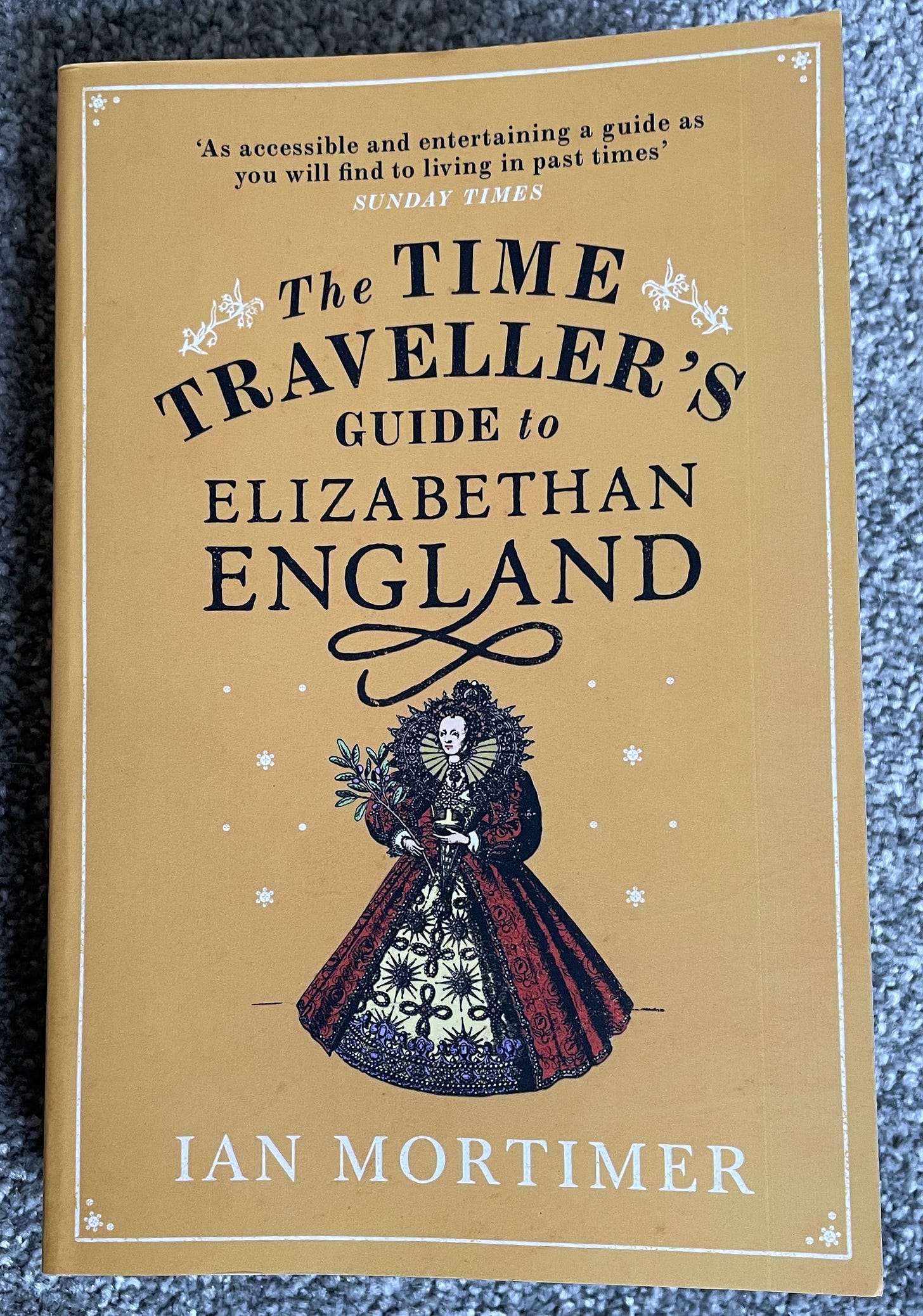The Elizabethan instalment from 2012 is the second volume in Ian Mortimer’s series of historical guides, and coincidentally the second I’ve read, having enjoyed the initial Medieval England one a few years ago. Whereas that one was much more in the vein of a travel guide, with boxed lists of Ten Things To See In London and the like, The Time Traveller's Guide to Elizabethan England is set out more like a regular history book.
The aim of these guides — there are now also volumes on Restoration Britain and Regency Britain — is to immerse the reader in the past rather than state in a dry way what laws were passed and what battles were fought. What would you see, smell, hear? How would you address a stranger, and what words or phrases might cause misunderstandings? What happens if you get a toothache?
Mortimer makes the point that history is ‘about understanding mankind over time’, and as such it pays to illuminate both similarities and differences between our own era and any previous one. There may be Shakespeare plays at The Globe in both eras (albeit not the same actual building), but their bear-baiting and witch trials seem as alien to us as our smartphones would to them.
The book starts around Shakespeare’s home town of Stratford, describing the town and its building work as well as the neighbouring countryside. Changes during the long reign of Elizabeth I are covered by describing what would be the case early or late in the period. There are chapters on clothing, food and drink, hygiene and illness, travelling and entertainment, as well as the more scene-setting aspects like religion and law.
Even if you think you know the history of this time — Drake and Raleigh, the Spanish Armada and voyages of discovery, and the beheading of Mary, Queen of Scots — there are bound to be gaps that this book will fill in the truly curious mind. You might know that Queen Elizabeth used to travel around the country staying with courtiers, but do you know what provision there was for her needing the toilet en route? It also seems like the male characters in the second series of Blackadder may have been ahead of the curve on the wearing of earrings.
It is vividly written with a light tone, but still has pages of endnotes if you want to follow up on any detail. As the author says, ‘I have done my best faithfully to represent England as it existed between Elizabeth’s accession on 17 November 1558 and her death on 24 March 1603’. While I haven’t been there in a time machine to check, it certainly feels like he’s done a good job.




